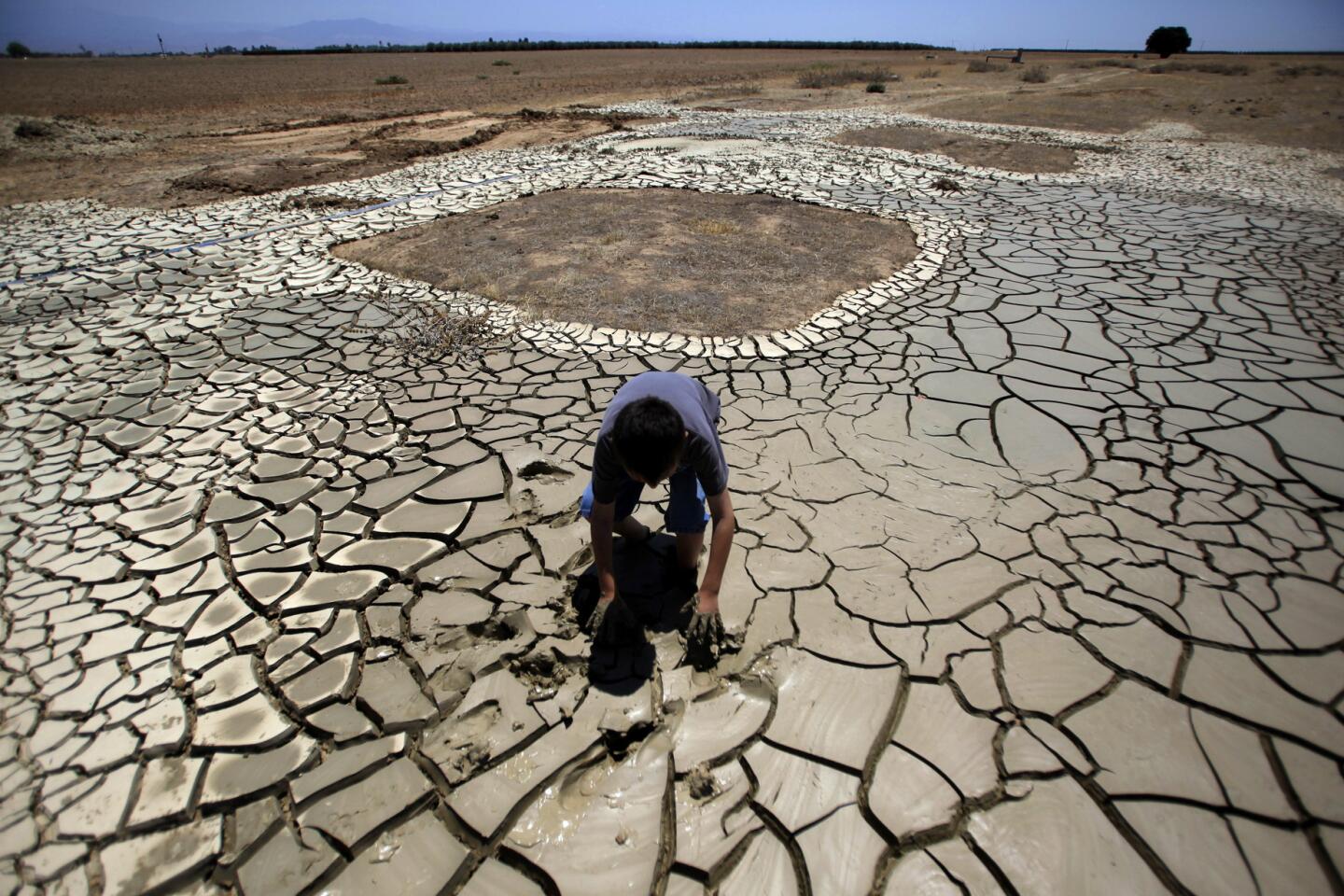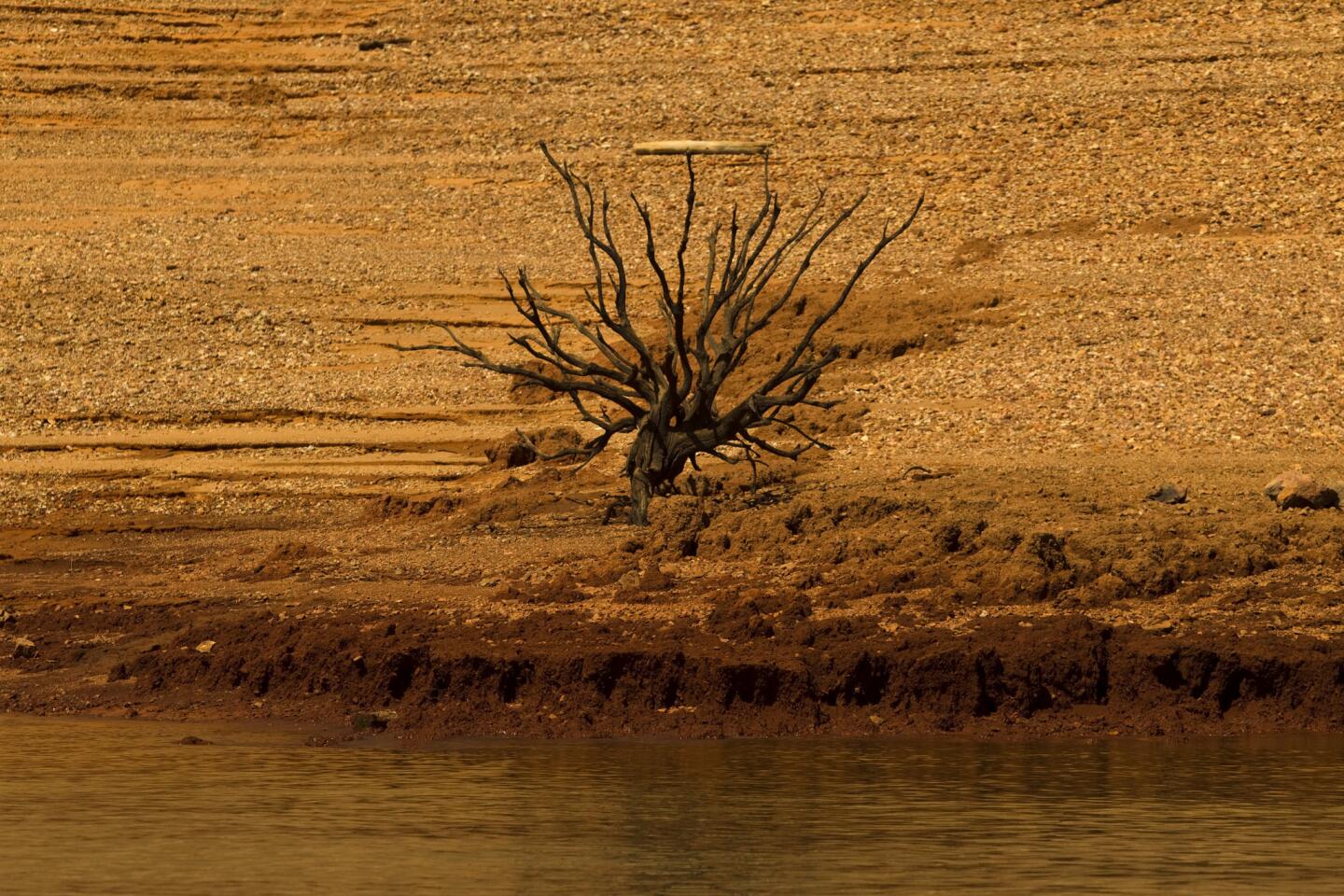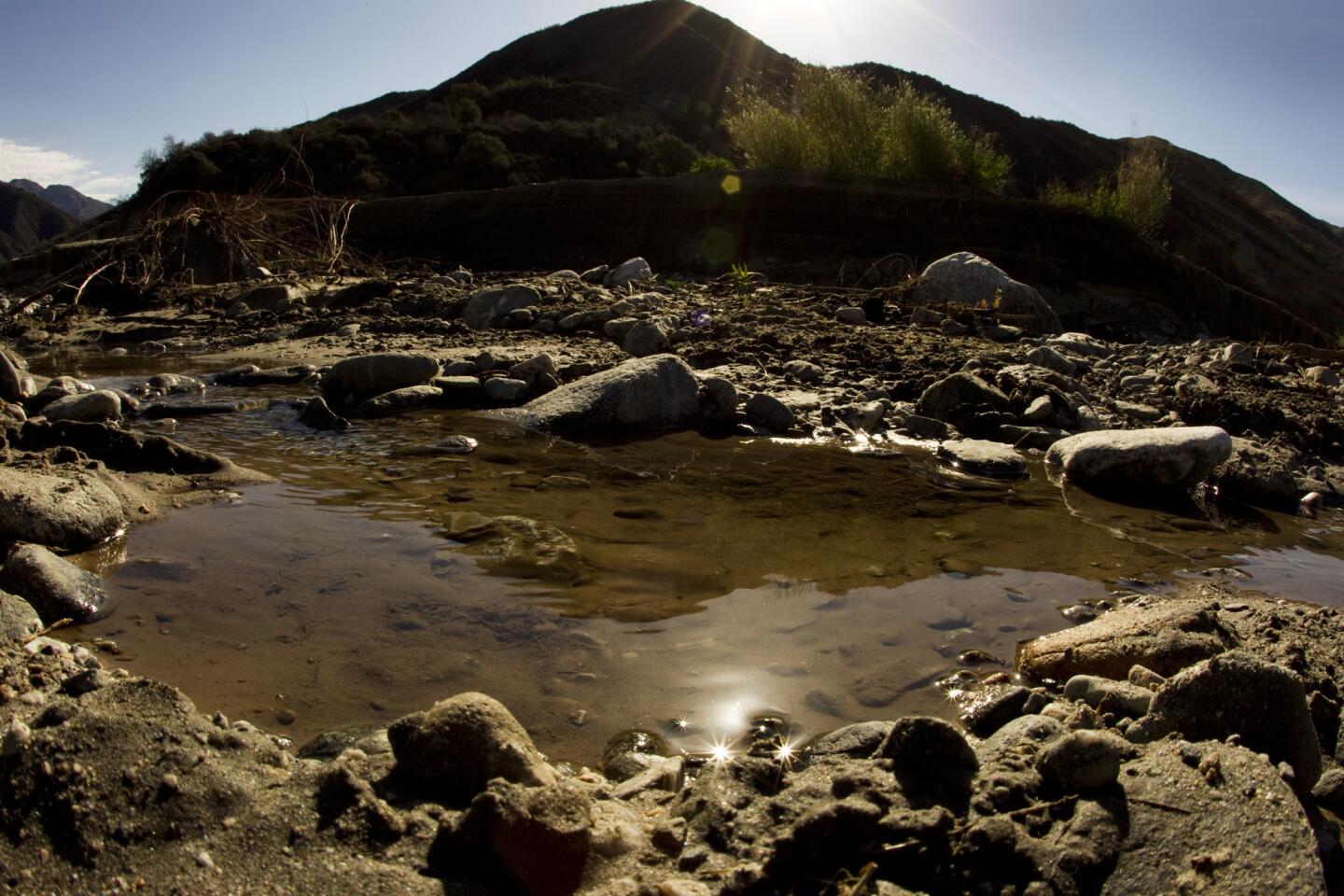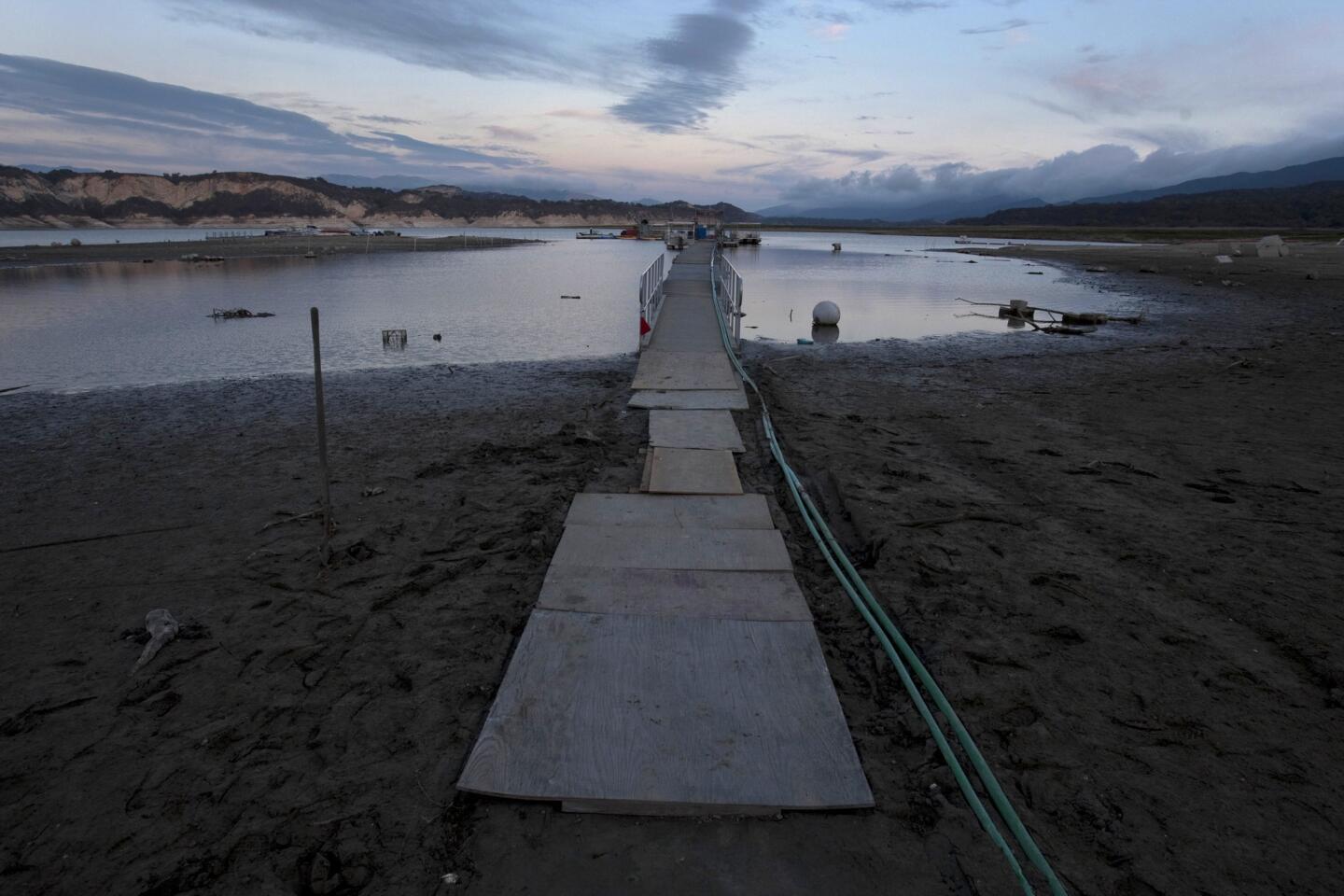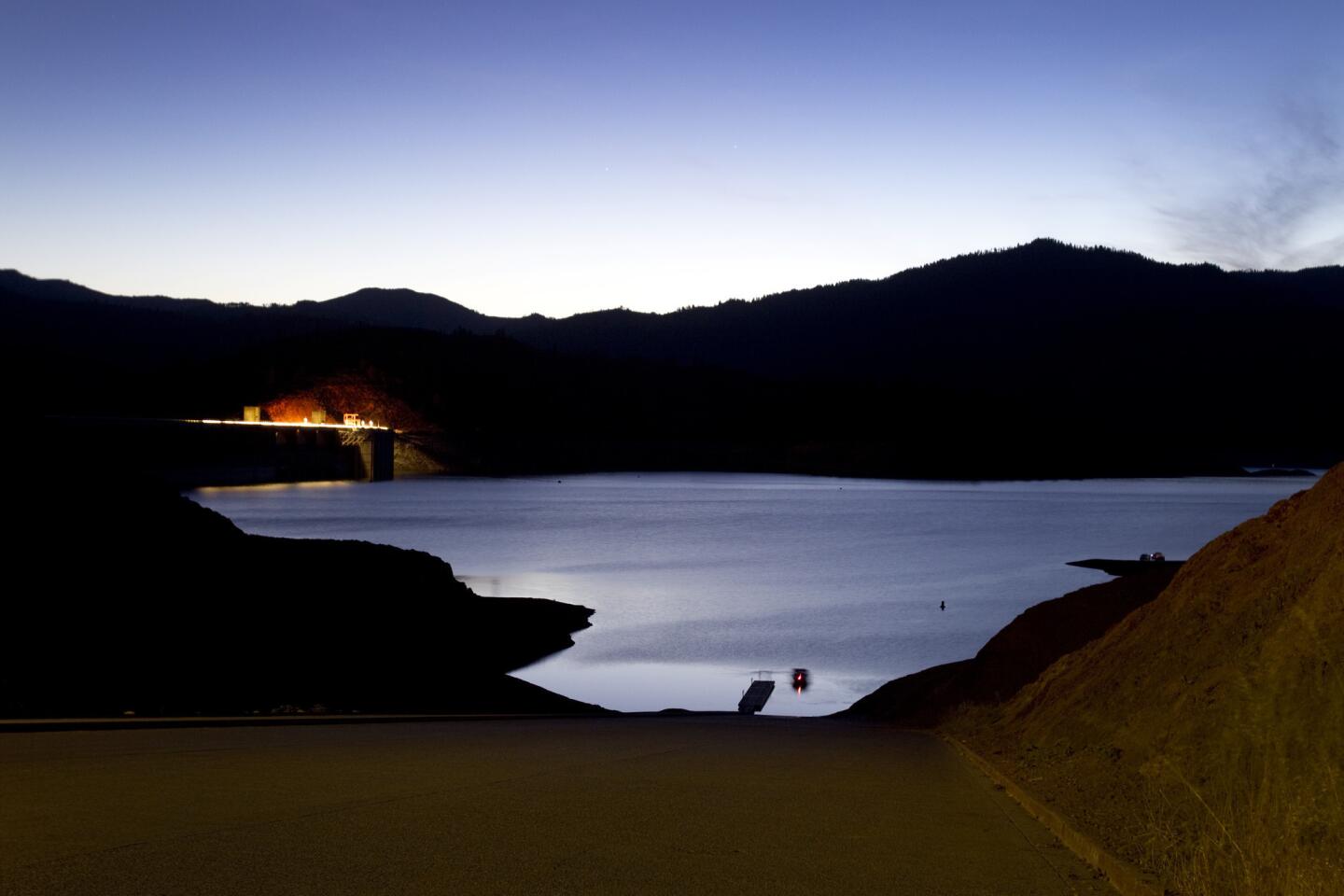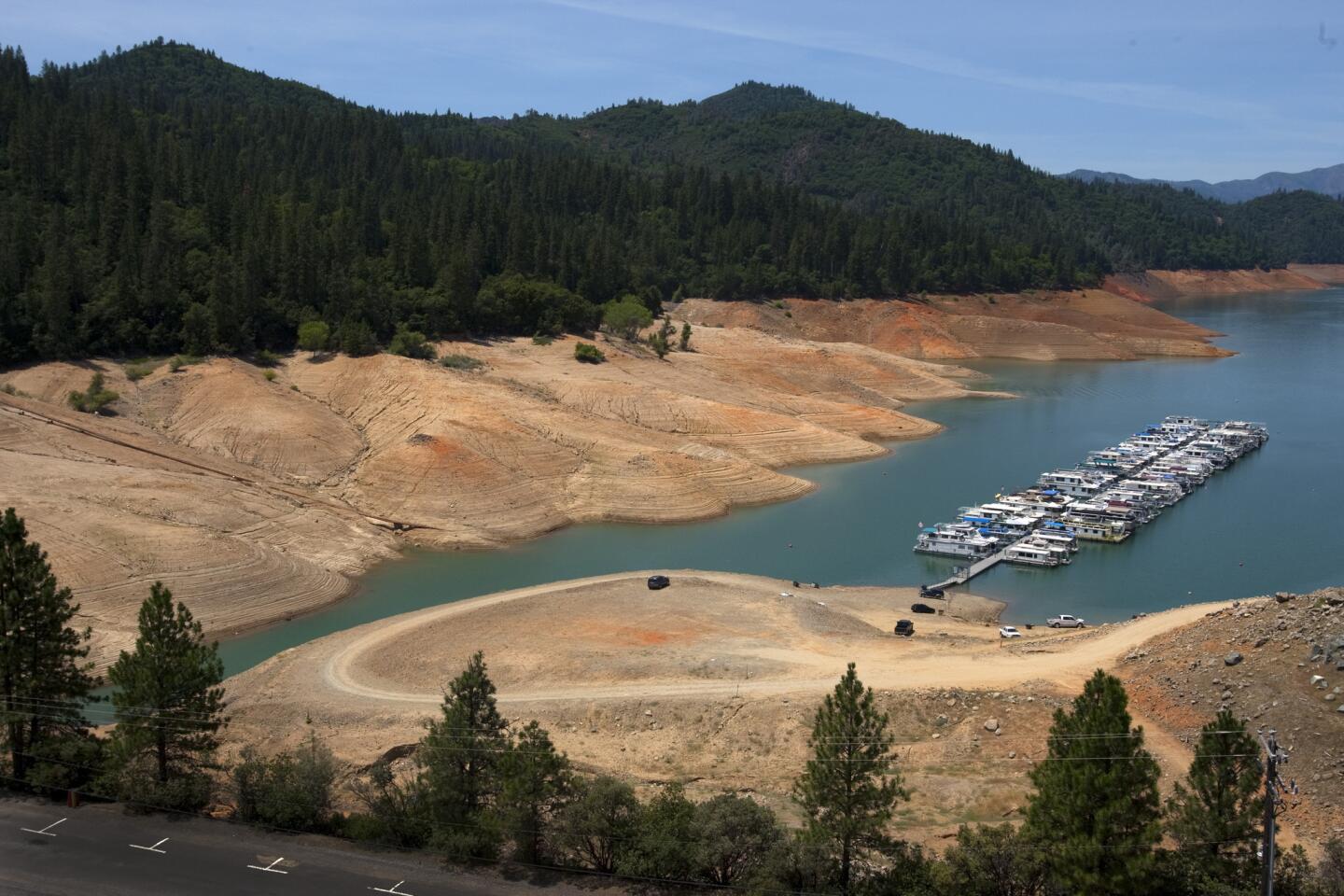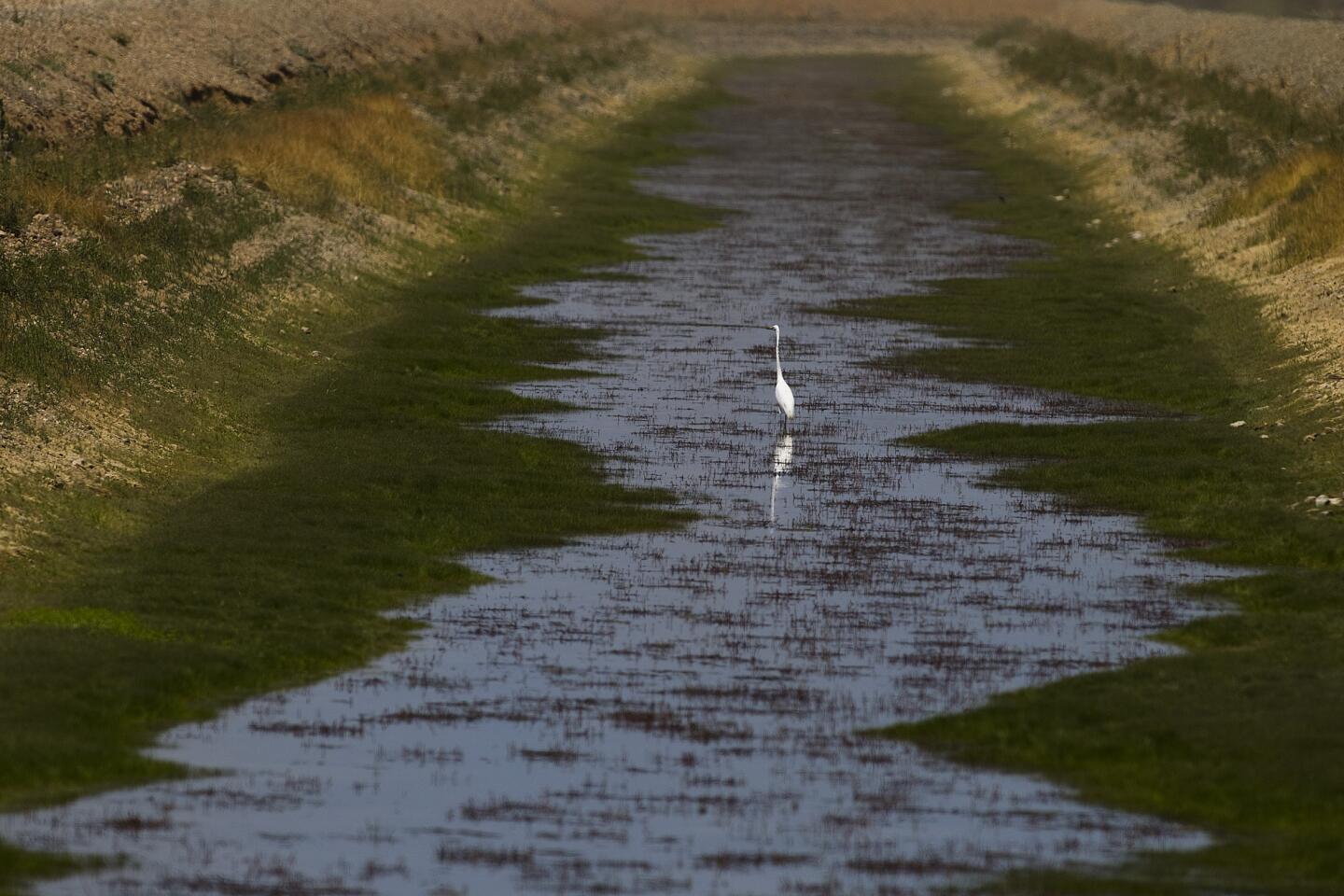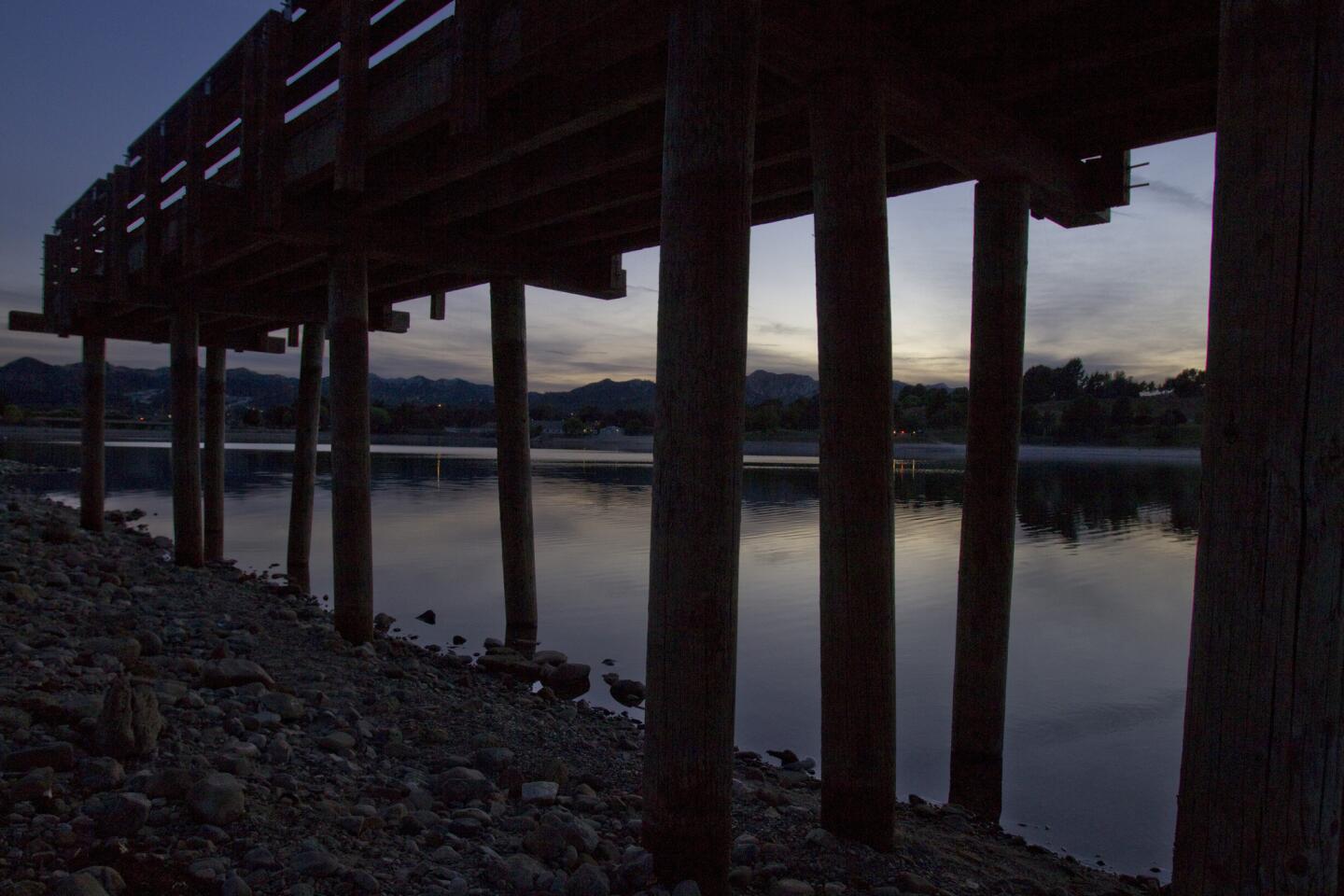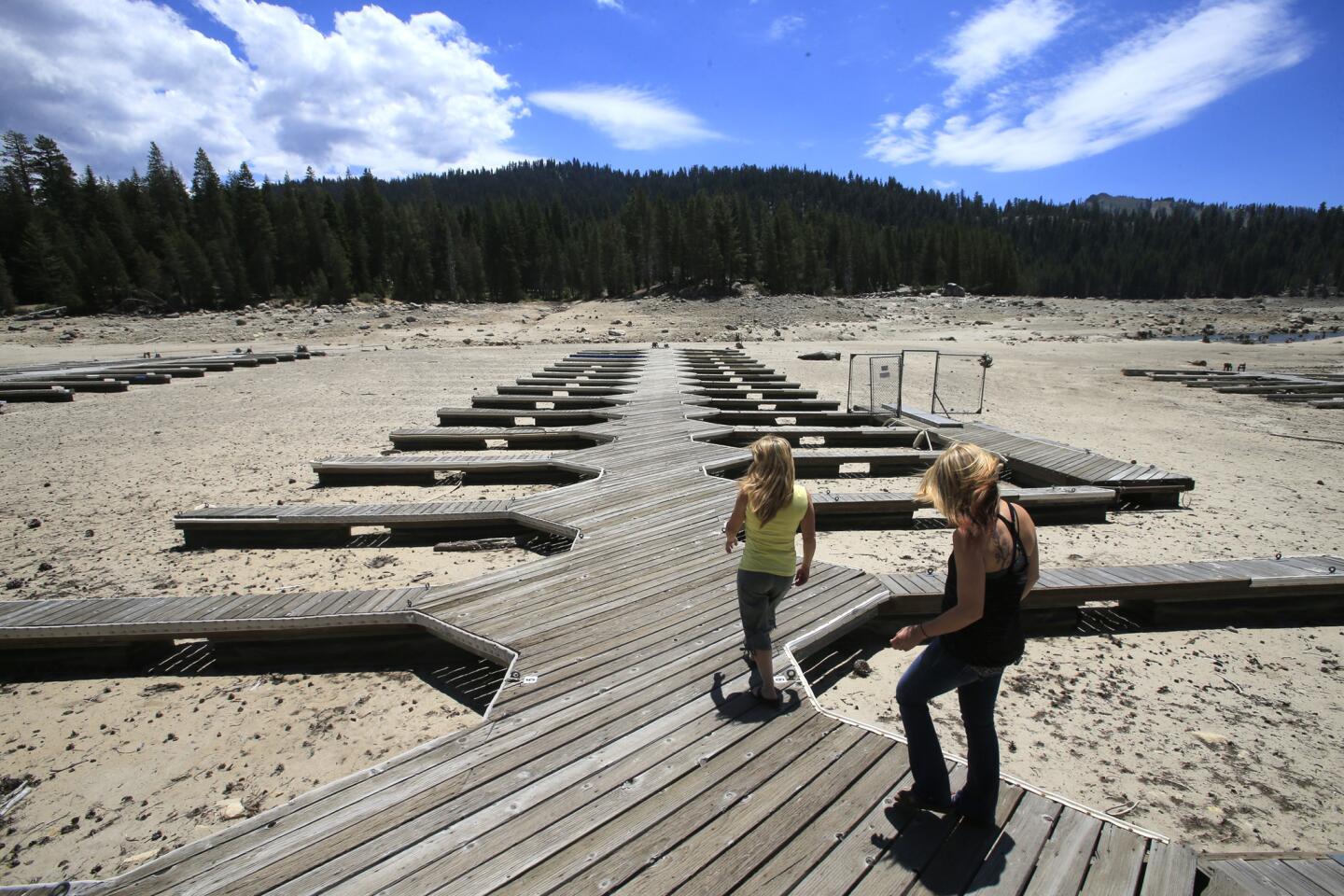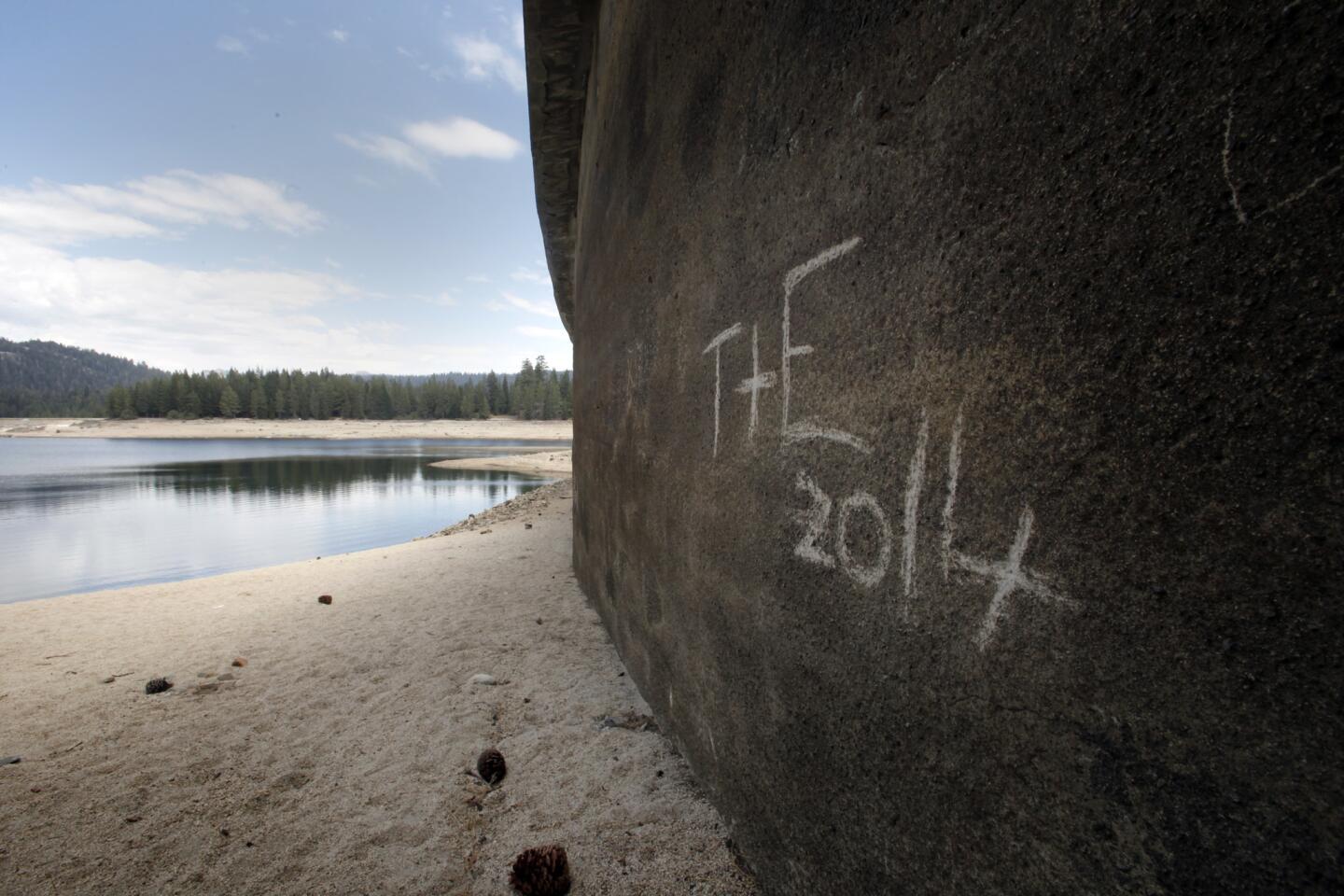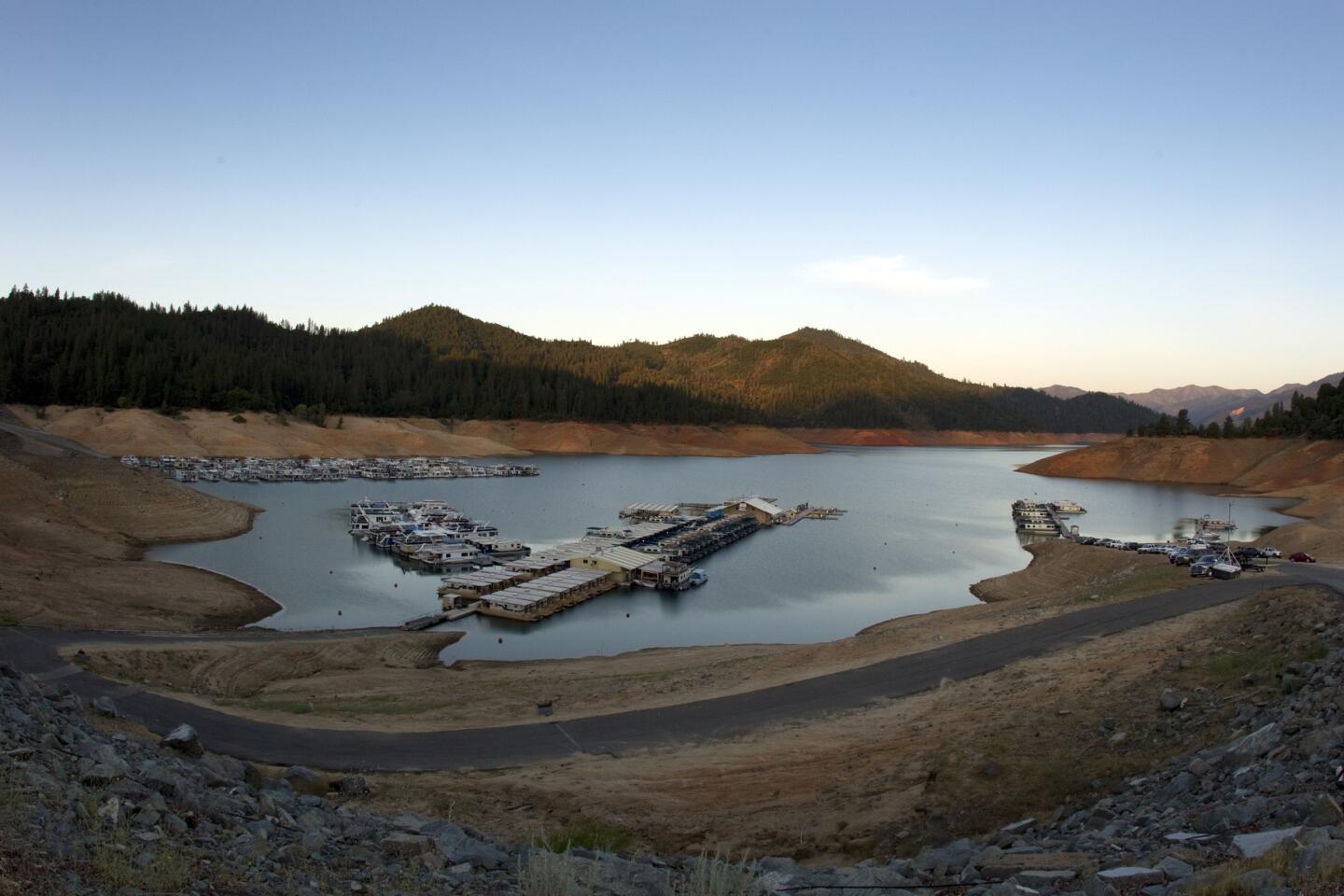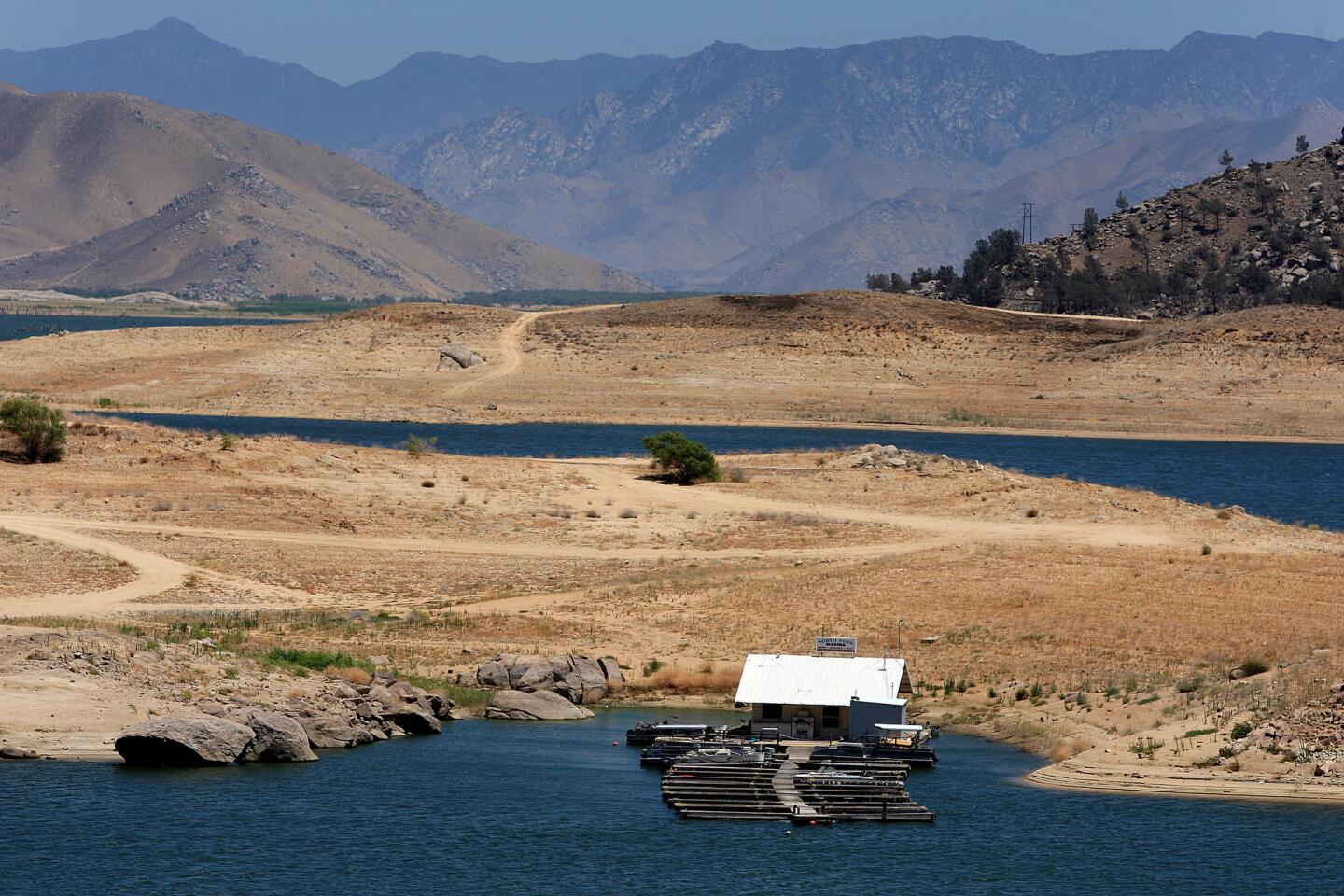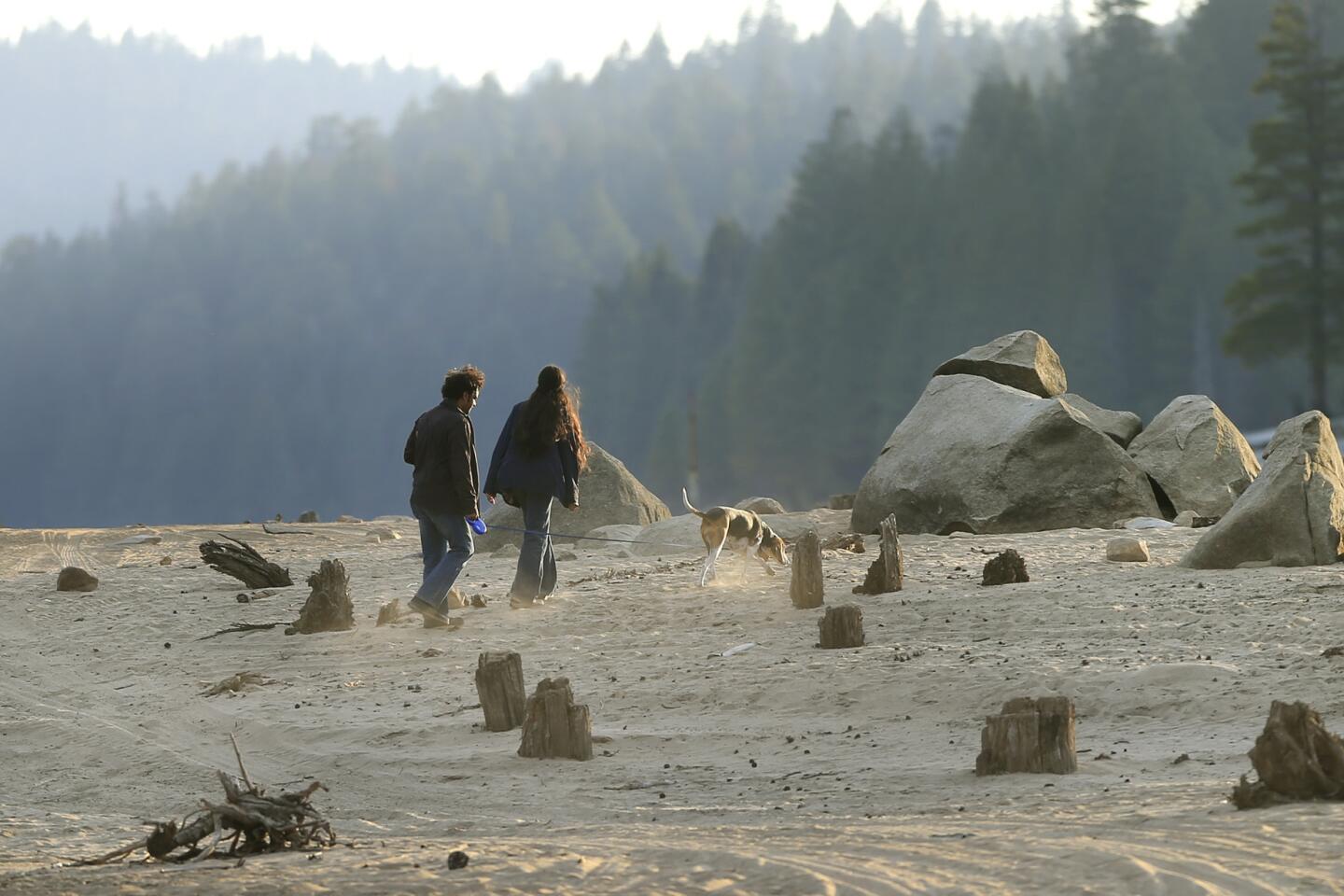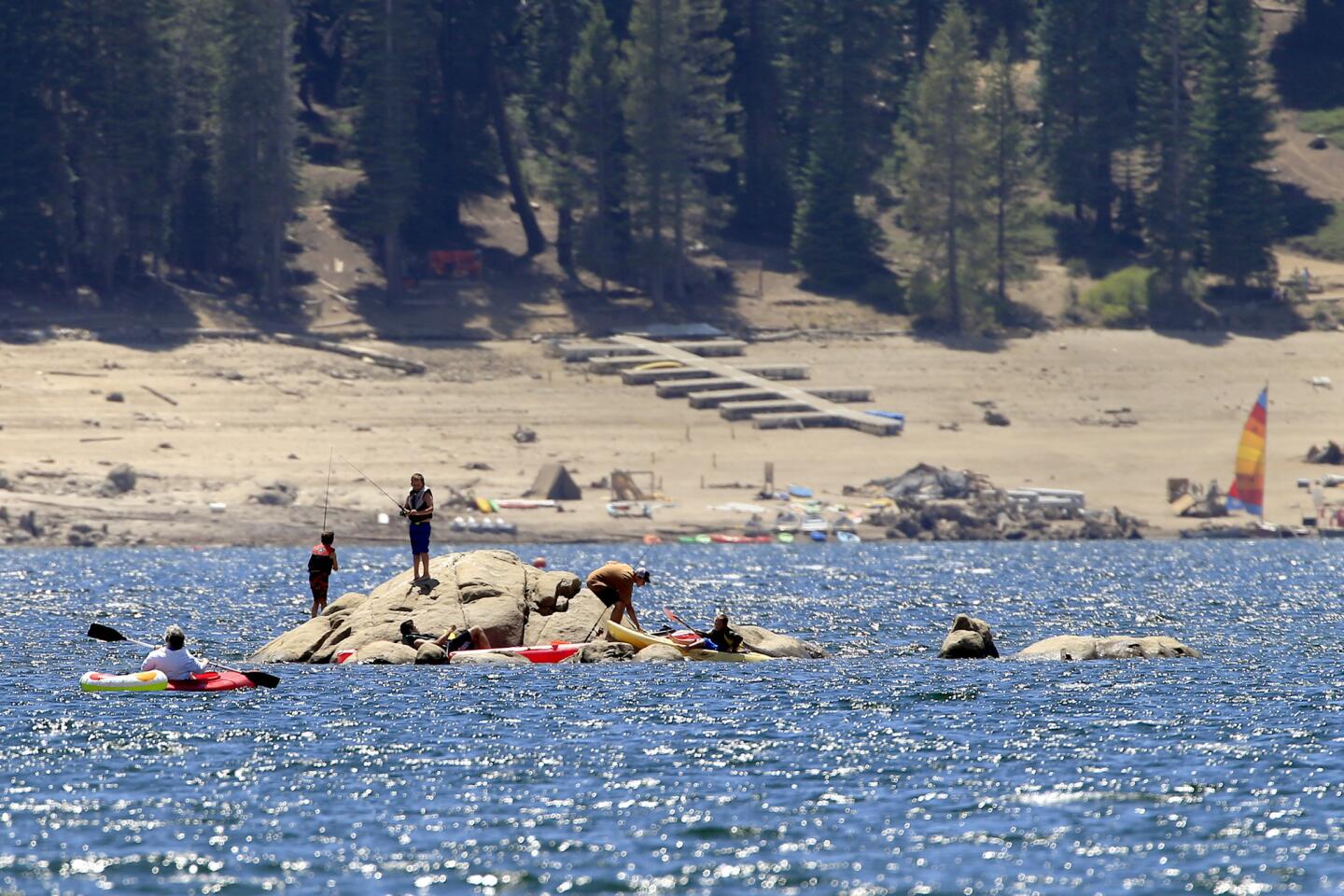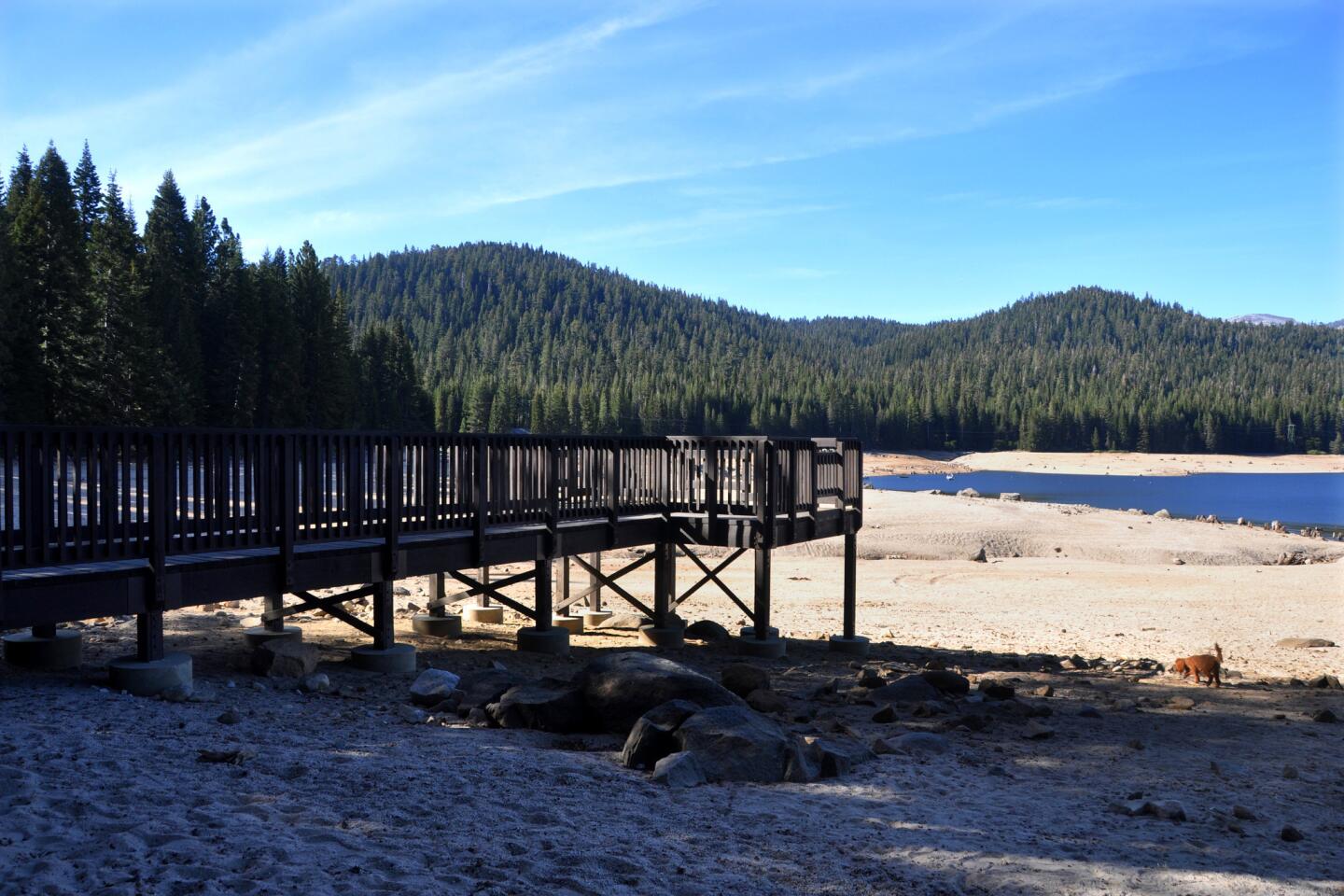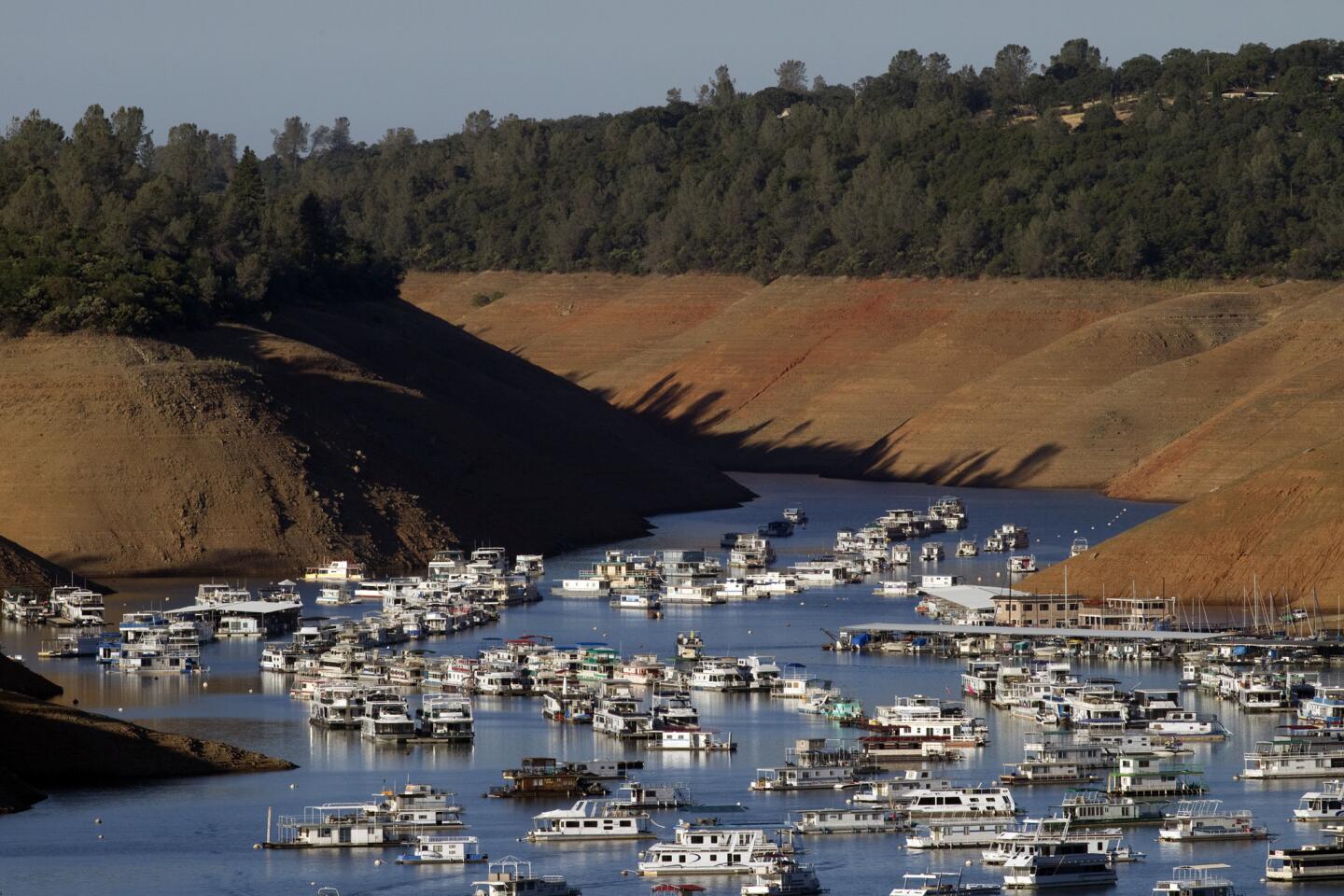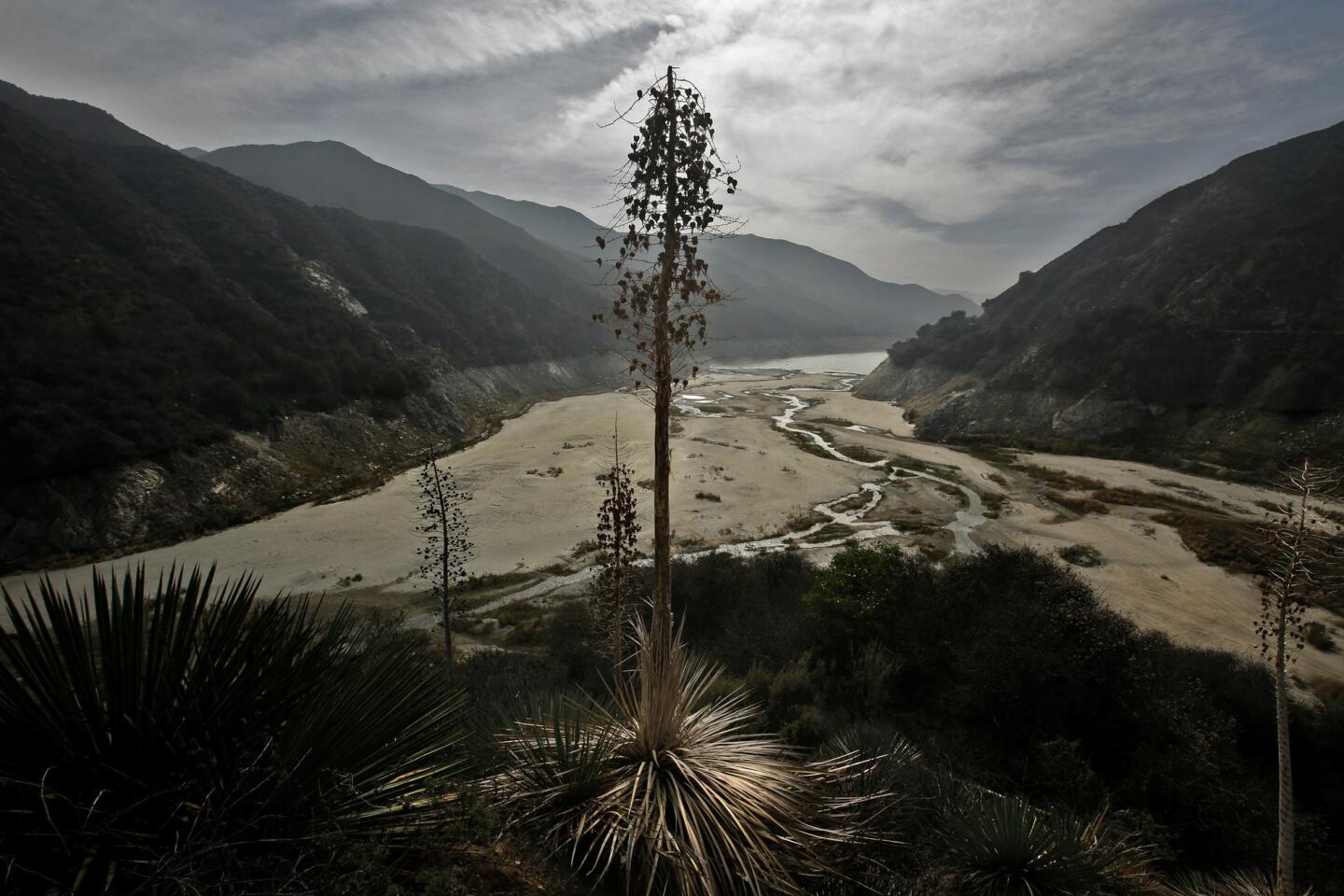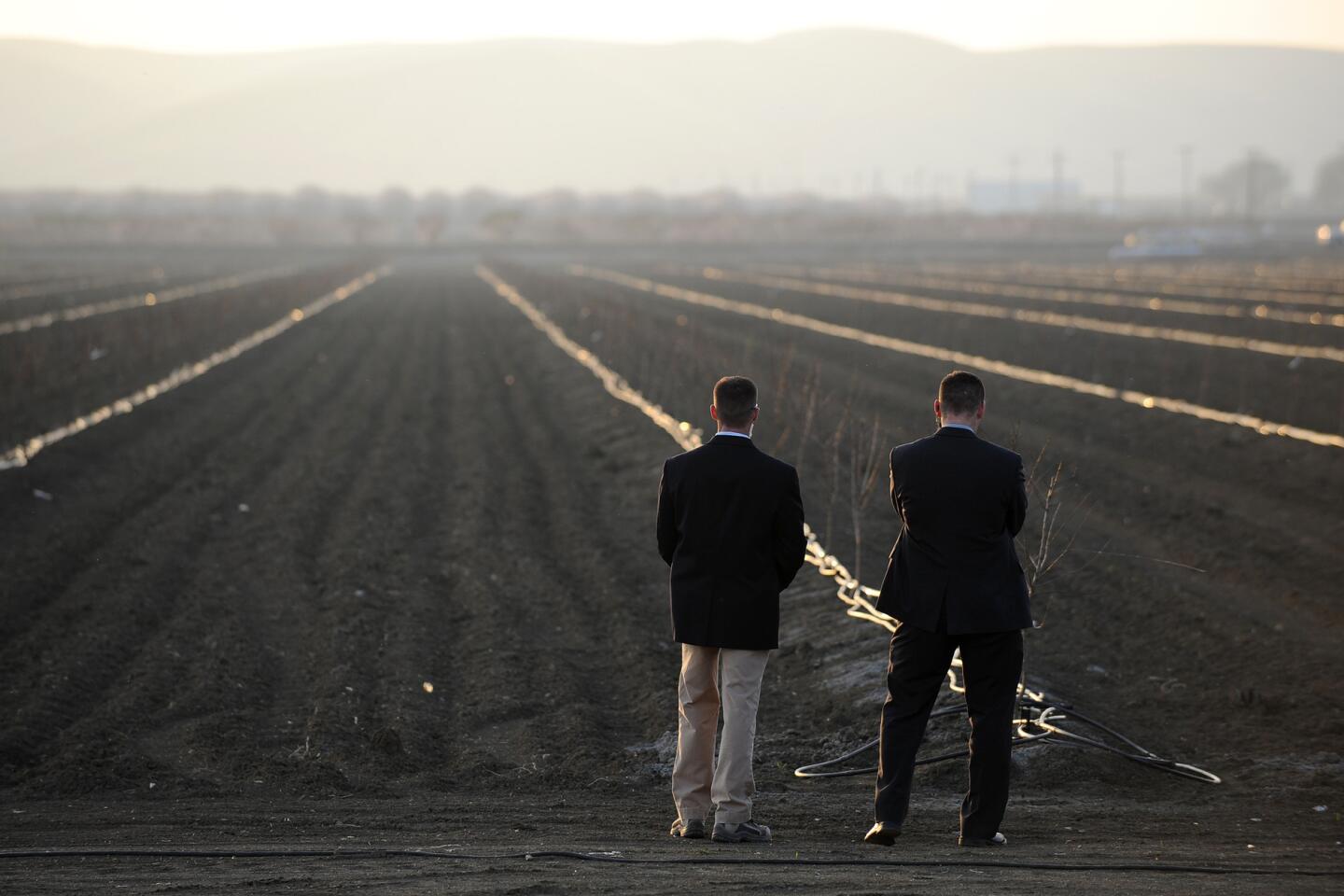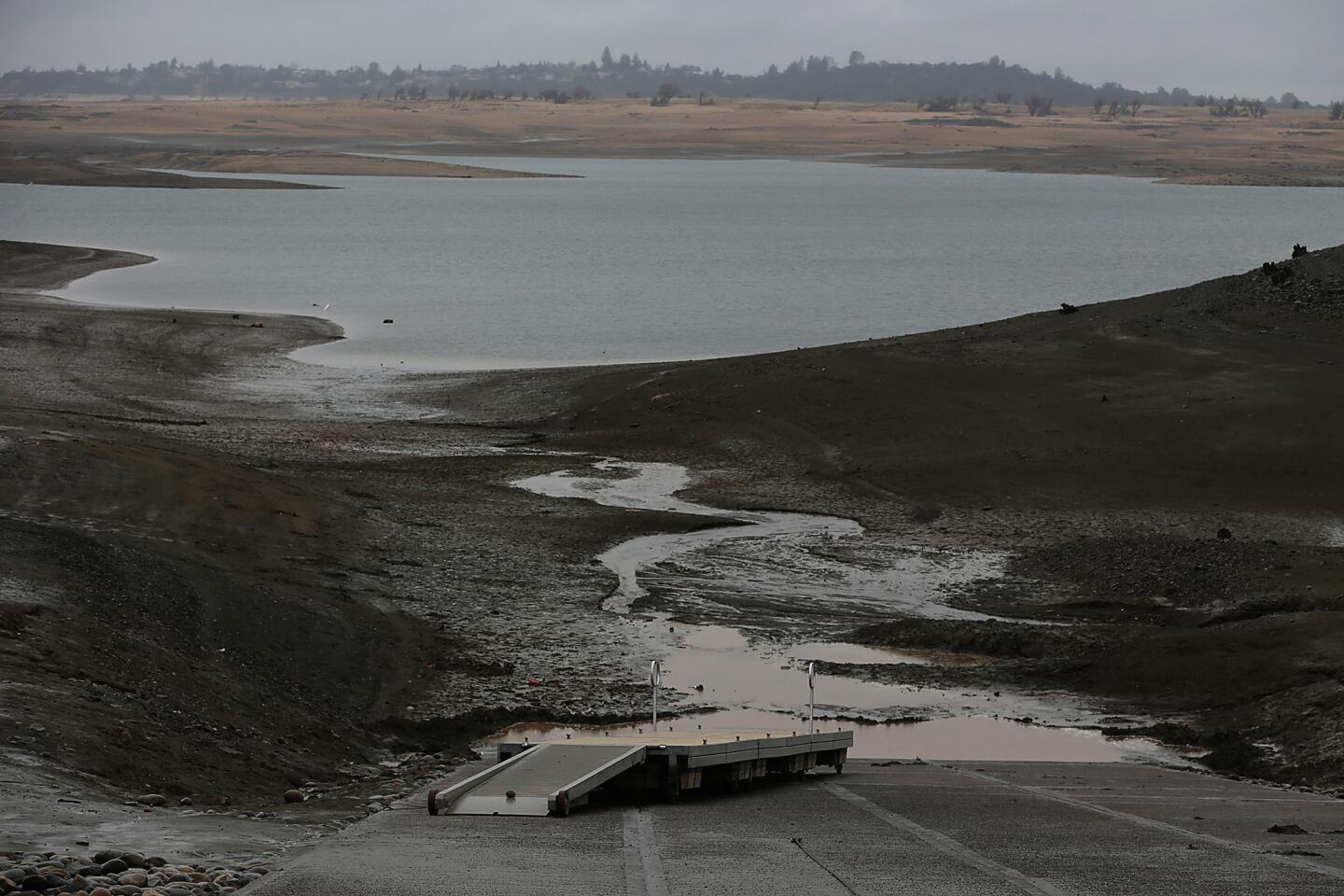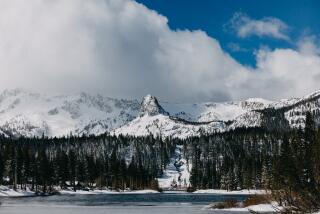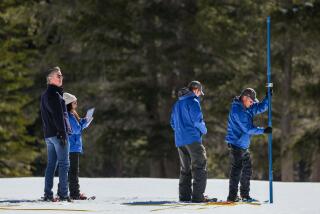Sierra snowpack shows improvement, but not enough to declare California’s drought over
- Share via
In a symbolic moment in California’s slow but steady drought recovery, a state surveyor on Wednesday found several feet of snow in the same Sierra Nevada meadow that was bare and brown just a year ago.
The depth of the snowpack was declared to be just below average, a huge improvement from last year, but still far from enough to declare the drought over.
Around 11 a.m., Frank Gehrke, chief of the California Cooperative Snow Surveys Program, thrust a long silver tube into Phillips Station’s renewed, robust snowpack and, minutes later, told gathered reporters that there was more than 58 inches of snow on the ground.
That snow held 26 inches of water content, he said, just short of average for the date.
“A big improvement compared to last year,” Gehrke said, “but not what we had hoped for.”
The Phillips Station measurement — which officials said was 97% of average — provides data for just one location and therefore is considered more symbolic than definitive. The results from the station about 90 miles east of Sacramento are not necessarily representative of statewide conditions, officials say.
Water officials prefer to use the electronic readings taken remotely at about 100 stations across the Sierra Nevada for a more accurate assessment. The latest readings, taken Wednesday around 8:30 a.m. showed that the water content held by the state’s snowpack was about 24 inches, or 87% of normal.
Though still below average now, the snowpack was in infinitely worse shape a year ago. On April 1, 2015, the statewide snowpack’s water content was just 5% of normal — the lowest ever recorded and the worst in hundreds of years. Data suggested that on average there was one inch of water hidden in the snow, but there was no snow at all on the Phillips Station field.
“This was a dry, dusty field last year,” Gehrke said, adding that Wednesday’s snowpack “seems good because it’s so much better than last year.”
Snowpack is important to California’s hydrology because when it melts, the water feeds into the state’s reservoirs; those reservoirs, in turn, send water to farmers in the Central Valley and to urban dwellers in Southern California. In normal years, it supplies about 30% of the state’s water needs.
The annual April 1 measurement is telling, officials say, because the snowpack traditionally peaks around that time.
Gov. Jerry Brown was on hand for last year’s April 1 snowpack measurement to unveil a historic executive order requiring a 25% reduction in urban water use statewide -- the first such mandatory measure in California history.
There were no dramatic announcements Wednesday. An advisory from Brown’s office sent early in the day said the governor was out of the state.
Asked whether California was still in a drought, Gehrke hedged.
“We’re barely average. It stops that downward slide,” he said. “Now we’re clearly looking at next year, and there are no reliable indicators of what next year will bring.”
For more on the California drought and water, follow me on Twitter @ByMattStevens
ALSO
Who wins with a $15 minimum wage?
Class-action lawsuit targets Palos Verdes Peninsula surfer gang
Apple wants the FBI to reveal how it hacked the San Bernardino killer’s iPhone
More to Read
Sign up for Essential California
The most important California stories and recommendations in your inbox every morning.
You may occasionally receive promotional content from the Los Angeles Times.
